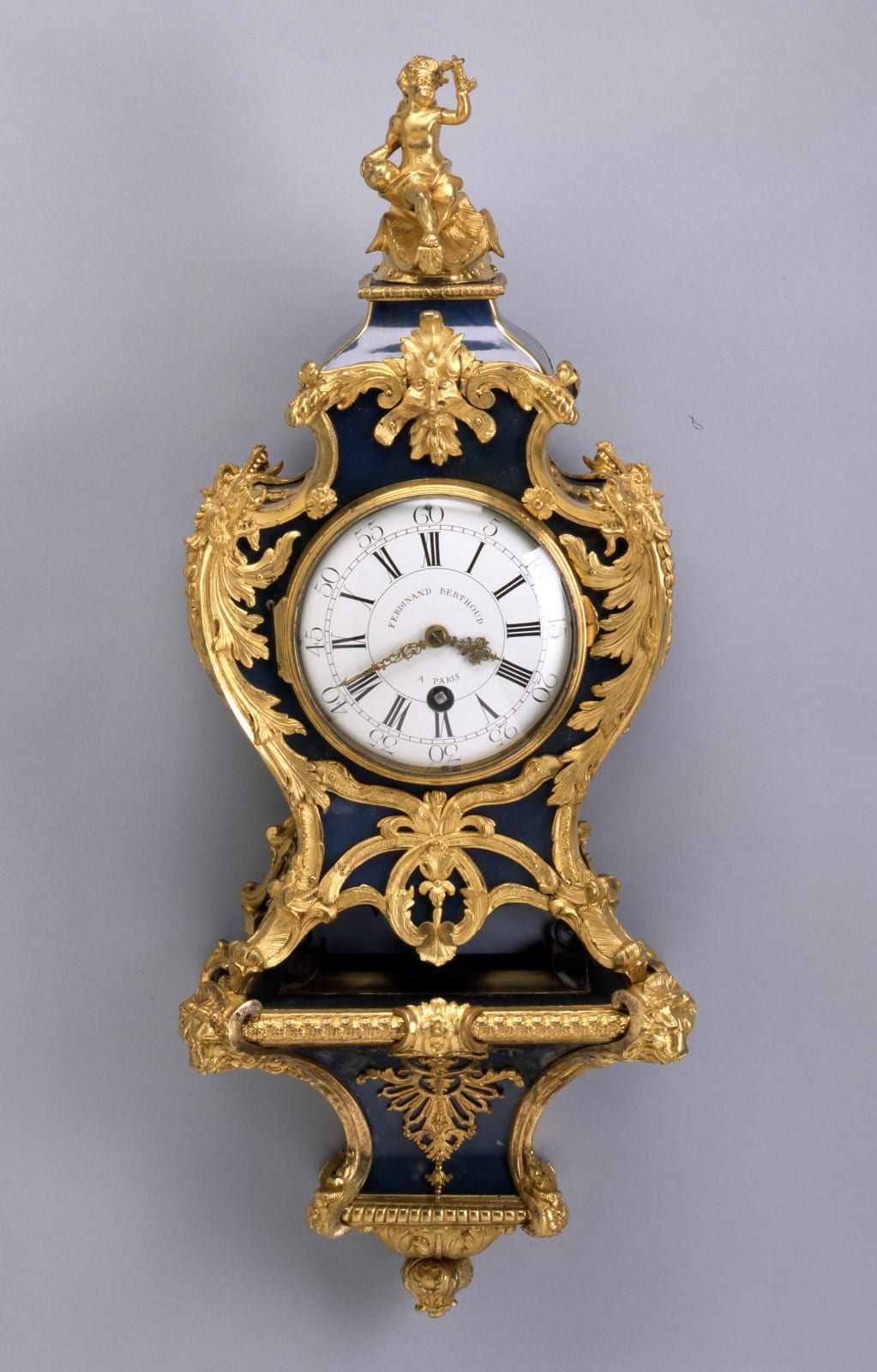
Pierre Kjellberg, "Encyclopédie de la Pendule Française du Moyen Age au XXe Siècle", 1997, p. 80, pl. G, illustrating a clock signed Jouard à Paris in a very similar cartel case, with differing bracket and of green-horn.
Ferdinand Berthoud
Literature
Pierre Kjellberg, "Encyclopédie de la Pendule Française du Moyen Age au XXe Siècle", 1997, p. 80, pl. G, illustrating a clock signed Jouard à Paris in a very similar cartel case, with differing bracket and of green-horn.
A rare and important Louis XV blue-horn and gilt bronze bracket clock of eight day duration, signed on the white enamel dial by the eminent horologer, Ferdinand Berthoud à Paris. The dial with outer Arabic numerals for the minutes and inner Roman numerals for the hours. Striking on the hour on a single bell and on the quarter hour on two bells, with pull repeat on request. The magnificent case with scrolled gilt bronze banding flanked by dragons and surmounted by the figure of Cupid holding an hourglass, on scrolling foliate feet and a waisted rectangular bracket, the angles with lion heads
Paris, date circa 1750
Height 66 cm.
The clock was made by one of the very finest makers, Ferdinand Berthoud (1727-1807). The quest for accurate timekeeping owes much to his numerous inventions, innovations and writings. He was born in Plancemont, Switzerland, the son of an architect and judiciary. In 1741 he began a three year apprenticeship as a clockmaker under his brother, Jean-Henri. He subsequently went to Paris, where it is thought he studied under the eminent clockmaker, Julien Le Roy (1686-1759). Even before he attained his mastership in 1754 he had begun to establish great repute. In 1752 Berthoud, aged 25 was invited to present at the Académie des Sciences a clock he had made which had a perpetual calendar and also indicated mean and solar time. It was received with great acclaim. He made his first marine chronometer in 1754 (sent for trial in 1761) and in 1764 was appointed a member of the Royal Society, London and Horloger Mécanicien de Sa Majesté et de la Marine ayant l'inspection de la construction des Horloges Marines. The position was of considerable importance especially at a time when the race to find longitude was the social and political talk of Europe. From 1766 Berthoud was put in charge of designing all timepieces used on board the French Royal Fleet. He was a member of several important committees including a commission to establish a Royal Clock Factory in Paris (1786), a juror responsible for deciding questions concerning the new time system (1793) and a member of the Temporary Commission for the Arts (1793). He also became a member of the Institute (1795) and was appointed a Chevalier de la Légion d'Honneur, 1804.
Berthoud not only made numerous complex and quality pieces but also wrote over 4000 pages on the subject. He was a great innovator whose most notable inventions included the bimetallic Physikalischer Salon, Dresden also represents his oeuvre.compensating balance and the detent escapement. His clocks and watches have rightly been described at the cutting edge of horological invention. His work is prized by major private collectors and museum curators including those at the Metropolitan Museum and Frick Collection, New York and at the Conservatoire des Arts et Métiers and Mobilier National, Paris.


